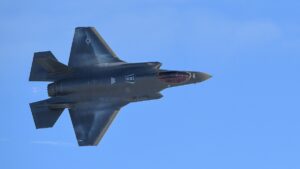
The U.S. Air Force wants proof that Lockheed Martin [LMT] will be able to field Block 4 advancements for the F-35A fighter before increasing the buy of the plane, Air Force Secretary Frank Kendall said on May 13. The service's fiscal 2023 budget curtails the planned buy of F-35As from more than $5 billion sought for 48 planes in fiscal 2022 to about $4.5 billion for 33 F-35As in fiscal 2023. "The reduction we took this year and that we…














